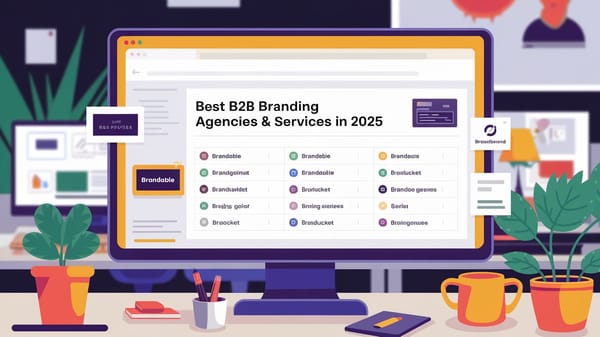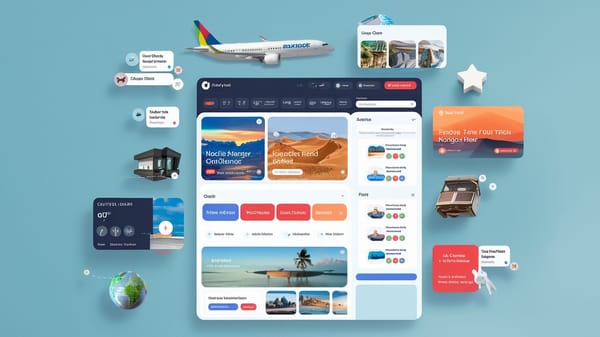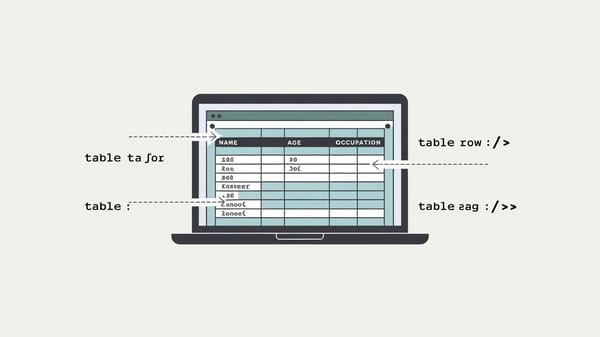Comparison of Top 10 Sales Management Tools 2025

In the rapidly evolving landscape of sales technology, 2025 has emerged as a pivotal year for sales management tools. As businesses strive to enhance their sales processes, the demand for robust, efficient, and user-friendly sales management software has never been higher. This report delves into the top 10 sales management tools of 2025, offering insights into their features, benefits, and market positioning.
Sales management software is no longer just about closing deals; it encompasses a comprehensive suite of functionalities designed to streamline the entire sales process. From lead identification and communication crafting to product demos and data recording, these tools provide a holistic approach to sales management. According to TechRadar, the best sales management software integrates seamlessly with existing systems, offering advanced reporting and customizable dashboards to enhance decision-making.
The competitive nature of the sales software market has led to a proliferation of options, each vying for the attention of businesses looking to optimize their sales strategies. As highlighted by TechnologyAdvice, selecting the right tool can significantly impact a company's ability to manage its sales pipeline effectively. This report aims to guide businesses through the myriad of choices, focusing on tools that offer the best overall performance, advanced features, and user-friendly interfaces.
Moreover, the integration of artificial intelligence (AI) into sales tools has revolutionized the industry. AI-driven solutions, as discussed by Predictable Revenue, are transforming traditional sales strategies into data-driven processes that enhance customer engagement and boost revenue. These innovations are essential for businesses aiming to stay competitive in today's fast-paced market.
You can also visit Oncely.com to find more Top Trending AI Tools. Oncely partners with software developers and companies to present exclusive deals on their products. One unique aspect of Oncely is its “Lifetime Access” feature, where customers can purchase a product once and gain ongoing access to it without any recurring fees. Oncely also provides a 60-day money-back guarantee on most purchases, allowing customers to try out the products and services risk-free.
Oncely are hunting for the most fantastic AI & Software lifetime deals like the ones below or their alternatives:

Table of Contents
- Overview of Sales Management Tools in 2025
- Key Features of Leading Sales Management Tools
- Pricing Models and Accessibility
- Integration and Customization Capabilities
- User Experience and Support
- Emerging Trends in Sales Management Software
- Comparison of Top Sales Management Software
- CRM Creatio vs. HubSpot
- Pipedrive vs. Salesforce
- Groove vs. Zoho CRM
- UpLead vs. Cognism
- Hunter vs. Lusha
- Forecastio vs. Insightly CRM
- ClickUp vs. monday CRM
- Freshsales Suite vs. Copper CRM
- Prospect CRM vs. Close CRM
- Scratchpad vs. Salesforce Sales Cloud
- Key Features and Benefits of Leading Sales Tools
- AI-Driven Insights and Automation
- Enhanced Customer Relationship Management (CRM)
- Seamless Integration and Customization
- Mobile Accessibility and Real-Time Data
- Data-Driven Decision Making and Analytics
- User-Friendly Interfaces and Support
- Scalability and Flexibility
Overview of Sales Management Tools in 2025
Key Features of Leading Sales Management Tools
Sales management tools in 2025 are equipped with advanced features designed to enhance productivity and streamline sales processes. A significant trend is the integration of artificial intelligence (AI) to automate repetitive tasks, allowing sales teams to focus on building customer relationships. AI capabilities include predictive analytics for lead scoring, personalized communication strategies, and customer behavior analysis (HIVO).
Moreover, these tools offer robust automation features for managing sales pipelines, tracking performance, and generating reports. For instance, platforms like Salesflare provide comprehensive dashboards that enable sales managers to visualize data and make informed decisions quickly. Integration with other business systems, such as email and CRM, is also a critical feature, ensuring seamless communication and data flow across platforms.
Pricing Models and Accessibility
The pricing models for sales management tools vary significantly, catering to different business sizes and needs. Subscription-based pricing is prevalent, with costs typically ranging from $25 to $100 per user per month, depending on the features offered (TechRadar). Some platforms provide tiered pricing plans, allowing businesses to choose a package that aligns with their budget and requirements.
Accessibility is another crucial aspect, with most tools offering both desktop and mobile interfaces. This ensures that sales teams can access essential features on the go, enhancing their ability to respond to customer inquiries and manage tasks efficiently. The availability of free trials and demo versions is also common, allowing businesses to evaluate the software before committing to a purchase.
Integration and Customization Capabilities
Integration capabilities are a defining feature of modern sales management tools. These platforms are designed to work seamlessly with existing business systems, such as CRM, marketing automation, and customer support software. This integration ensures that sales teams have a unified view of customer interactions and can leverage data from various sources to enhance their strategies (Fortune).
Customization is equally important, allowing businesses to tailor the software to their specific needs. Many tools offer customizable dashboards, reporting features, and workflow automation, enabling sales teams to optimize their processes and focus on high-priority tasks. For example, HubSpot CRM & Sales Hub is known for its extensive customization options, which help businesses align the software with their unique sales processes.
User Experience and Support
User experience is a critical factor in the adoption and success of sales management tools. The best platforms offer intuitive interfaces that are easy to navigate, reducing the learning curve for new users. Ease of use is often highlighted in user reviews and ratings, with platforms like Freshworks CRM receiving high scores for their user-friendly design.
Support options are also a key consideration, with many vendors providing comprehensive support through email, phone, and online resources. Some platforms offer dedicated account managers and training sessions to help businesses maximize the value of their investment. The availability of community forums and knowledge bases further enhances the support ecosystem, allowing users to share insights and solutions.
Emerging Trends in Sales Management Software
The sales management software landscape is continuously evolving, with several emerging trends shaping the industry in 2025. One notable trend is the increasing use of AI and machine learning to enhance sales efficiency and decision-making. These technologies enable sales teams to analyze large datasets, identify patterns, and predict customer behavior, leading to more targeted and effective sales strategies (Yesware).
Another trend is the rise of mobile-first solutions, reflecting the growing need for sales teams to access tools and data on the go. Mobile apps are becoming more sophisticated, offering features that were once limited to desktop applications. This shift is driven by the need for real-time data access and the ability to manage sales activities from anywhere.
Finally, there is a growing emphasis on personalization and customer-centric approaches. Sales management tools are increasingly incorporating features that allow sales teams to tailor their interactions based on individual customer preferences and behaviors. This trend is supported by the integration of social selling and multi-channel communication strategies, which enable sales teams to engage with customers across various platforms and touchpoints.
In summary, the sales management tools of 2025 are characterized by advanced features, flexible pricing models, seamless integration capabilities, and a focus on user experience. These tools are essential for businesses looking to enhance their sales processes, improve efficiency, and drive revenue growth in an increasingly competitive market.
Comparison of Top Sales Management Software
CRM Creatio vs. HubSpot
While both CRM Creatio and HubSpot are leading tools in the sales management space, they cater to different needs within the sales process. CRM Creatio is renowned for its 360-degree contact views, which provide comprehensive insights into customer interactions and history. This feature is particularly beneficial for businesses that prioritize detailed customer relationship management and require a holistic view of their customer data.
On the other hand, HubSpot excels in AI-powered sales automation, making it ideal for companies looking to streamline their sales processes through automation. HubSpot's AI capabilities help automate repetitive tasks, such as email follow-ups and lead scoring, which can significantly enhance sales team productivity. The platform's integration with various marketing tools also provides a seamless experience for businesses looking to align their sales and marketing efforts.
Pipedrive vs. Salesforce
Pipedrive and Salesforce are both highly rated CRM platforms, but they serve different market segments. Pipedrive is best known for its custom sales pipelines, which allow businesses to tailor their sales processes to fit their unique needs. This customization is particularly advantageous for small to medium-sized businesses that require flexibility in their sales operations.
Salesforce, however, is a more robust solution designed for larger enterprises. It offers extensive features for sales reporting and analytics, making it a powerful tool for data-driven decision-making. Salesforce's integration capabilities with third-party applications further enhance its functionality, allowing businesses to create a cohesive ecosystem of sales, marketing, and service tools.
Groove vs. Zoho CRM
Groove and Zoho CRM both offer unique strengths that cater to different business needs. Groove is particularly suited for enterprises using Salesforce or Salesforce Industry Clouds, providing seamless integration and enhancing the capabilities of Salesforce users. Its focus on enterprise-level solutions makes it a preferred choice for large organizations with complex sales processes.
Zoho CRM, on the other hand, is praised for its free account management tools, making it an attractive option for startups and small businesses looking for cost-effective CRM solutions. Zoho's user-friendly interface and affordable pricing plans make it accessible to businesses with limited budgets, while still offering essential CRM functionalities.
UpLead vs. Cognism
UpLead and Cognism are both excellent tools for lead generation and qualification, but they differ in their approach. UpLead focuses on lead verification and qualification, ensuring that sales teams have access to accurate and up-to-date contact information. This feature is crucial for businesses that rely heavily on outbound sales strategies and need to ensure the quality of their leads.
Cognism, however, offers unrestricted access to information, unfettered by credit limits or geography restrictions. This makes Cognism an ideal choice for businesses looking to expand their reach globally and require comprehensive data access without limitations. Its extensive database and advanced search capabilities enable sales teams to identify and target potential leads more effectively.
Hunter vs. Lusha
Hunter and Lusha are both powerful tools for sales outreach, but they serve different purposes. Hunter is an all-in-one email outreach platform that simplifies the process of finding and verifying email addresses. Its integration with various email platforms makes it a valuable tool for businesses looking to enhance their email marketing efforts.
Lusha, on the other hand, is designed to help sales teams reach company decision-makers more efficiently. Its focus on providing contact information for key decision-makers makes it an essential tool for businesses aiming to close deals faster. Lusha's database includes detailed profiles of company executives, enabling sales teams to tailor their outreach strategies effectively.
Forecastio vs. Insightly CRM
Forecastio and Insightly CRM offer distinct advantages for sales forecasting and project management, respectively. Forecastio is best known for its sales forecasting and planning capabilities, providing real-time pipeline analytics and integration with HubSpot. This makes it an ideal choice for businesses that require accurate sales forecasts and wish to integrate their CRM with marketing tools.
Insightly CRM, however, excels in project management and delivery, offering features that support the management of complex sales projects. Its integration with Google Workspace and other productivity tools makes it a suitable option for businesses that need to manage both sales and project workflows seamlessly.
ClickUp vs. monday CRM
ClickUp and monday CRM are both recognized for their workflow automation capabilities, but they cater to different user needs. ClickUp is praised for its extensive customization options and ability to automate various sales processes, making it a versatile tool for businesses with diverse workflow requirements.
monday CRM, on the other hand, is known for its usability and intuitive interface, making it a preferred choice for teams that prioritize ease of use. Its visual project management features and collaborative tools enhance team productivity, making it suitable for businesses that require a straightforward CRM solution with robust collaboration capabilities.
Freshsales Suite vs. Copper CRM
Freshsales Suite and Copper CRM are both excellent options for startups and small businesses, but they offer different strengths. Freshsales Suite is highlighted for its affordability and comprehensive features, covering both sales and marketing functionalities. Its low-cost pricing and customizable platform make it accessible to startups with limited budgets.
Copper CRM, however, is best suited for teams using Google Workspace, offering seamless integration and enhancing productivity for businesses that rely on Google's suite of tools. Its focus on usability and integration capabilities makes it a valuable tool for businesses looking to streamline their sales processes within the Google ecosystem.
Prospect CRM vs. Close CRM
Prospect CRM and Close CRM cater to different market segments, with Prospect CRM being ideal for wholesale businesses. Its features are tailored to support the unique needs of wholesale operations, including inventory management and order processing.
Close CRM, on the other hand, is designed for multichannel outreach, providing tools that support communication across various platforms. Its focus on multichannel engagement makes it a suitable choice for businesses that require a comprehensive CRM solution to manage interactions across email, phone, and social media.
Scratchpad vs. Salesforce Sales Cloud
Scratchpad and Salesforce Sales Cloud both offer unique features that cater to different sales management needs. Scratchpad is best for sales teams using Salesforce, providing a streamlined interface and enhancing the usability of Salesforce's extensive features. Its focus on improving Salesforce user experience makes it a valuable tool for teams looking to maximize their CRM investment.
Salesforce Sales Cloud, however, is a comprehensive platform that supports various sales functions, including buyer engagement, sales analytics, and AI-driven insights. Its robust feature set and integration capabilities make it a preferred choice for large enterprises looking for an all-in-one sales management solution.
Key Features and Benefits of Leading Sales Tools
AI-Driven Insights and Automation
The integration of artificial intelligence (AI) into sales tools has revolutionized the way sales teams operate, offering unprecedented opportunities for efficiency and effectiveness. AI-driven insights allow sales teams to analyze vast amounts of data quickly, providing predictive analytics that help in forecasting sales trends and customer behaviors. This capability is crucial for tailoring sales strategies to meet customer needs and improve conversion rates. For instance, AI tools like those discussed in Predictable Revenue are transforming sales processes from prospecting to engagement, enhancing the overall sales funnel.
Moreover, automation features in sales tools streamline repetitive tasks, such as data entry and follow-up emails, freeing up sales personnel to focus on more strategic activities. Tools like HubSpot and Salesforce are known for their robust automation capabilities, which include automated lead scoring and personalized communication strategies. These features not only improve efficiency but also enhance the customer experience by ensuring timely and relevant interactions.
Enhanced Customer Relationship Management (CRM)
Advanced CRM functionalities are a cornerstone of leading sales management tools, enabling businesses to maintain and nurture customer relationships effectively. Platforms like Salesforce and HubSpot offer comprehensive CRM solutions that integrate seamlessly with other business systems, ensuring a unified view of customer interactions across various channels. This integration is vital for creating a cohesive customer journey and improving customer satisfaction.
Salesforce, for example, provides a range of CRM features, including account and contact management, sales forecasting, and customer service automation (Clevenio). These tools allow sales teams to track customer interactions, manage leads, and personalize communication, leading to more meaningful engagements and higher conversion rates.
Seamless Integration and Customization
While previous sections have covered the importance of integration and customization, this section delves deeper into the specific benefits these features offer. Leading sales tools are designed to integrate seamlessly with existing business systems, such as marketing automation and customer support software. This integration ensures that sales teams have access to comprehensive customer data, enabling them to make informed decisions and tailor their strategies accordingly.
Customization options are equally important, allowing businesses to adapt the software to their unique needs. Many sales tools offer customizable dashboards, reporting features, and workflow automation, enabling sales teams to optimize their processes and focus on high-priority tasks. For example, Pipedrive is noted for its customizability, allowing sales teams to tailor the software to their specific sales processes (Clevenio).
Mobile Accessibility and Real-Time Data
In today's fast-paced business environment, mobile accessibility is a critical feature of sales tools. Sales teams need access to real-time data and tools on the go to respond quickly to customer inquiries and market changes. Mobile-first solutions are becoming increasingly sophisticated, offering features that were once limited to desktop applications. This shift is driven by the need for real-time data access and the ability to manage sales activities from anywhere.
Tools like Salesforce and HubSpot offer mobile applications that provide sales teams with access to CRM data, sales analytics, and communication tools, ensuring they can stay connected and productive regardless of their location. This capability is essential for maintaining a competitive edge in the dynamic world of sales.
Data-Driven Decision Making and Analytics
Sales tools equipped with advanced analytics capabilities empower sales teams to make data-driven decisions that enhance performance and drive growth. These tools provide valuable insights into sales activities, customer behaviors, and market trends, enabling sales teams to identify opportunities and optimize their strategies.
For instance, AI-powered analytics in tools like those highlighted by Predictable Revenue offer predictive insights that help sales teams forecast sales outcomes and tailor their approaches accordingly. This data-driven approach not only improves sales efficiency but also enhances the customer experience by ensuring that interactions are relevant and timely.
User-Friendly Interfaces and Support
While previous sections have discussed user experience, this section focuses on the specific features that contribute to a user-friendly interface and robust support system. Leading sales tools prioritize ease of use, offering intuitive interfaces that reduce the learning curve for new users. Platforms like Freshworks CRM are known for their user-friendly design, which is often highlighted in user reviews and ratings.
Support options are also a key consideration, with many vendors providing comprehensive support through email, phone, and online resources. Some platforms offer dedicated account managers and training sessions to help businesses maximize the value of their investment. The availability of community forums and knowledge bases further enhances the support ecosystem, allowing users to share insights and solutions.
Scalability and Flexibility
Scalability is a crucial factor for businesses looking to grow and adapt to changing market conditions. Leading sales tools offer flexible solutions that can scale with the business, accommodating increased data volumes and user numbers. This scalability ensures that the tools remain effective and efficient as the business expands.
For example, Salesforce offers various pricing tiers and features that cater to businesses of different sizes, ensuring that the platform can grow alongside the business (Clevenio). This flexibility is essential for businesses looking to maintain a competitive edge and drive sustainable growth.
In conclusion, the key features and benefits of leading sales tools are centered around AI-driven insights, enhanced CRM functionalities, seamless integration, mobile accessibility, data-driven decision-making, user-friendly interfaces, and scalability. These features are essential for businesses looking to optimize their sales processes, improve efficiency, and drive revenue growth in an increasingly competitive market.
Conclusion
The research on the top sales management tools highlights the transformative role of advanced features, particularly the integration of artificial intelligence (AI), in enhancing sales productivity and streamlining processes. AI capabilities, such as predictive analytics for lead scoring and customer behavior analysis, are pivotal in allowing sales teams to focus on relationship-building rather than repetitive tasks. Tools like HubSpot and Salesforce exemplify the integration of AI and automation, providing robust solutions that improve efficiency and customer engagement. Furthermore, the emphasis on seamless integration with existing business systems and extensive customization options ensures that these tools can be tailored to meet specific business needs, enhancing their utility across various organizational contexts.
The study also underscores the importance of user experience, pricing flexibility, and mobile accessibility in the adoption of sales management tools. Platforms such as Freshworks CRM are noted for their user-friendly interfaces, which reduce the learning curve and facilitate widespread adoption. The prevalence of subscription-based pricing models, ranging from $25 to $100 per user per month, caters to businesses of all sizes, while mobile-first solutions address the growing need for real-time data access. These features collectively ensure that sales teams can operate efficiently and effectively, regardless of location or budget constraints.
The implications of these findings suggest that businesses should prioritize the adoption of sales management tools that offer AI-driven insights, seamless integration, and user-friendly interfaces to remain competitive in the evolving market landscape. As the demand for personalized and customer-centric approaches grows, companies must leverage these tools to enhance their sales strategies and drive revenue growth. Moving forward, organizations should consider investing in platforms that not only meet their current needs but also offer scalability and flexibility to adapt to future market changes.





